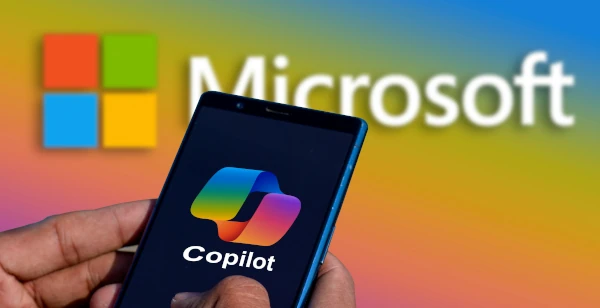AI meets presentations: When humans and machines collaborate
Whether it’s a pitch, an internal meeting, or a conference, presentations are a fundamental aspect of corporate communication. With the rapid advancements in Artificial Intelligence (AI), one pressing question arises: How can AI already support the creation and delivery of presentations, and where are its limits?
In this article, we take a look at the three central elements of every presentation - content, slides, people - and show what role AI can play in each.
Why AI and presentations can be a dream team - and where things get tricky
Algorithms and AI tools are increasingly changing how we communicate. In contrast, presentations remain a deeply human form of exchange - sentences are often improvised, in very few cases presentations are absolutely perfect, but that is precisely why they are authentic. AI cannot replace this authenticity, but it can help with preparation - especially with the tasks that many people don't like to do: Sorting content, collecting ideas, preparing visualizations.
These tools accelerate the process, so you don’t have to start from scratch. However, it’s crucial to remember that AI doesn’t work independently. Great results are always the product of collaboration between humans and AI. While AI provides efficiency, the creative and strategic direction is firmly in your hands.
From idea to message: How to develop content with AI
The central challenge at the start of every presentation: what do you actually want to say?AI can help you to identify topics, structure relevant information and develop a common thread - provided it has been briefed correctly. After all, the better the input, the better the output.
How to get your AI on the right track
Tools such as ChatGPT can be helpful in brainstorming and subsequent structuring by asking the right questions. Instead of general instructions (“Create a presentation about innovation”), giving specific details will deliver better results:- Who is the target audience?
- In what context does the presentation take place?
- What is the aim of the presentation?
- What is the preferred style?
- What message should definitely stick?
Brief the AI in as much detail as you would like to be briefed yourself. Provide the answers to the above questions - and all other information - from the very first brief. This is the only way to create content with substance and avoid having to constantly readjust it.
Structure, not information overload: Finding the narrative thread
AI helps to work out the essence of complex topics in particular. A helpful approach: Give the AI a role (“Imagine you are an innovation consultant...”) and ask them to divide the topic into three logical sections. This usually generates very good results, which they can then elaborate on.
Use functions such as outline generators or bullet-to-text tools to sort your thoughts. Remember: working with AI is an iterative process. By asking specific questions and refining together, clarity emerges.
From script to slide: AI for visualization
“Content first” is the guiding principle: only when the content is ready you should move on to design. This not only saves time as content revisions don't mess up the entire deck, but also prevents the creation of pretty but empty slides.
How AI supports visualization
AI tools can also help you to develop suitable visualization approaches for your content. Whether classic diagrams and tables or more creative formats such as infographics and visual storytelling - for example with comic figures or symbolic images - the possibilities are endless. For example, try asking ChatGPT a specific question: “I would like to present the advantages of remote work on a slide. Which form of visualization is suitable for this?” You will usually receive specific suggestions - including suitable formats, examples and an assessment of the strengths and weaknesses of the respective presentation.

However, current AI tools often reach their limits when it comes to actually implementing these suggestions:
Corporate design challenges: One of the biggest weaknesses of many AI tools is the lack of ability to create corporate design-compliant suggestions. Although they often provide generic solutions, these usually do not match the individual design specifications of a company. Additional (software) solutions or manual adjustments are therefore required for precise and consistent implementation.
Simplistic and uninspired designs: AI tools often deliver very simple and uncreative designs in the actual implementation. The designs often no longer match the content. For an inspiring and innovative design, considerable reworking or the use of specialized design software is often necessary.
- PowerPoint Copilot: Although Copilot can automatically adapt content, the tool shows weaknesses, especially when it comes to reliable compliance with the corporate design. In addition, content is sometimes swallowed or changed, which increases the workload even further.
-
- Beautiful.ai: Although this tool offers good approaches to presentation design, like Copilot it often produces rudimentary slides with spelling mistakes, altered content and only limited adaptation to the corporate design.
Generating images - yes, designing slides - not so much
While entire slide layouts still usually have to be created or reworked manually, suitable images can be generated more easily with AI. Tools such as Midjourney deliver good results if you formulate clearly: - Beautiful.ai: Although this tool offers good approaches to presentation design, like Copilot it often produces rudimentary slides with spelling mistakes, altered content and only limited adaptation to the corporate design.
[Art style] of a [subject] in [location/setting], [mood]
- Important: Text elements and fonts should be inserted manually afterwards - automatic integration has so far only worked to a limited extent.
Conclusion: AI offers great impulses for visualizations, but does not (yet) replace manual slide design.
Clear the stage for people: Presentations remain personal
Despite all the technological support, a presentation is more than just pretty slides. It depends on the performance - and therefore on the people themselves.
Digital coaches: support, but no substitute
- PowerPoint Speaker Coach: Analyzes speaking speed, pauses, filler words and provides structured feedback.
- Yoodli: Offers specific tips on rhetoric, body language and possible questions based on video recordings.
But as helpful as these tools are: They are no substitute for real, human feedback. This is because they do not recognize nuances or charisma - and cannot respond to individual impact.
Not in the mood for a stage? The avatar takes over
If you don't like speaking in front of an audience, you can use tools such as HeyGen to have a presentation recorded as a video avatar. The AI creates authentic-looking speech scenes from a short video and a script - even in different languages or dialects.
This is helpful for international communication - but the personal appearance remains irreplaceable.
Conclusion: AI can give feedback and offer alternatives - but it cannot be authentic and spontaneous. Presentations are and remain a live moment.
Authentic instead of perfect
AI is revolutionizing the way we prepare presentations - from brainstorming to structure and visualization. But one thing remains clear: the direction, the why and the impact - all of this comes from you.
Use AI as a sparring partner, not as a substitute. It helps to save time, develop ideas and speed up processes. But: the courage to be imperfect is more in demand than ever. Because real impact does not come from perfection, but from personality.
You May Also Like
Related articles

Controlled creativity: How AI maintains brand voice

Microsoft 365 Copilot review: Excel & Word



